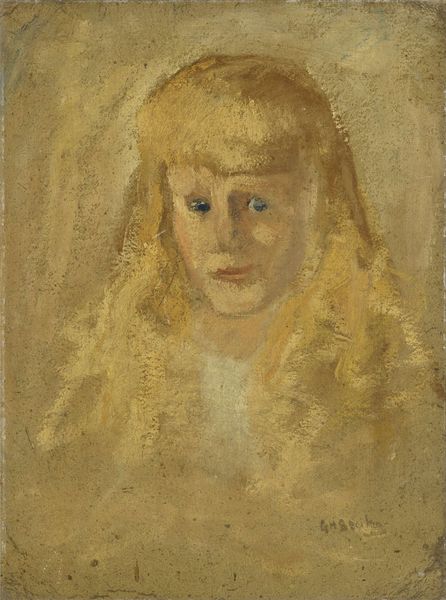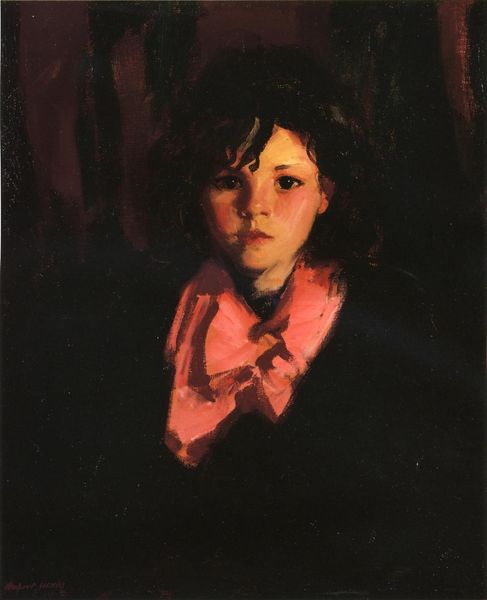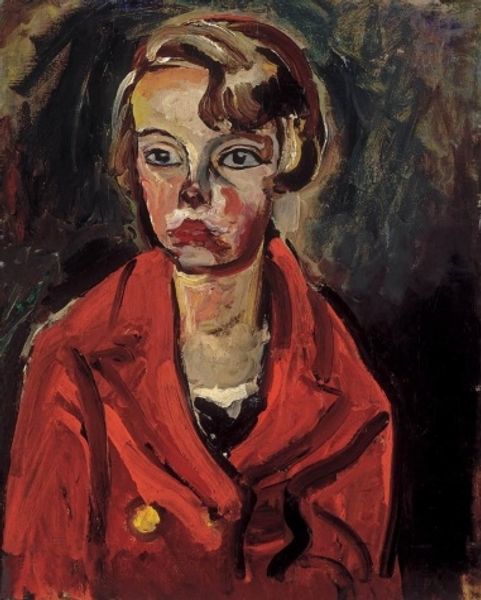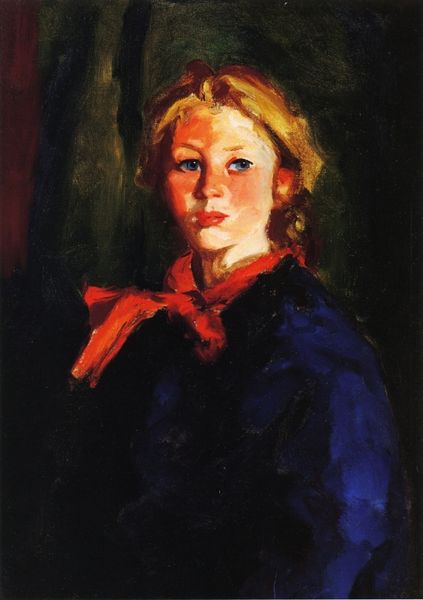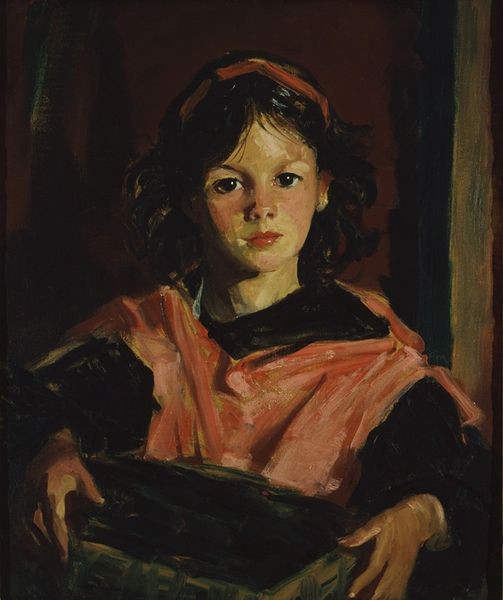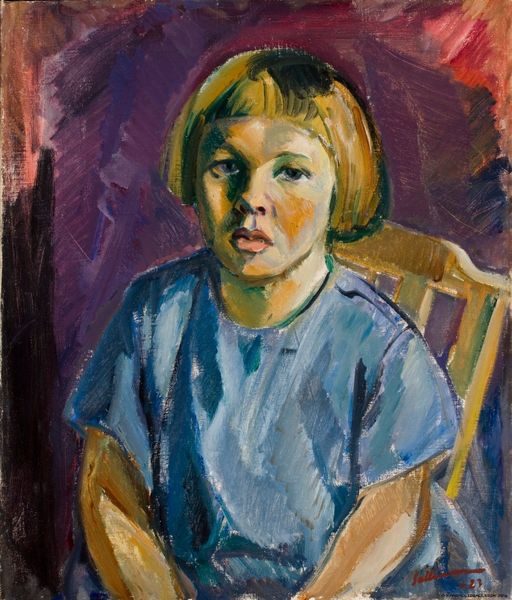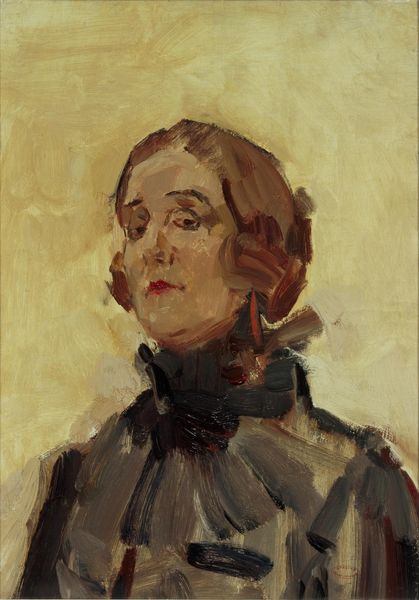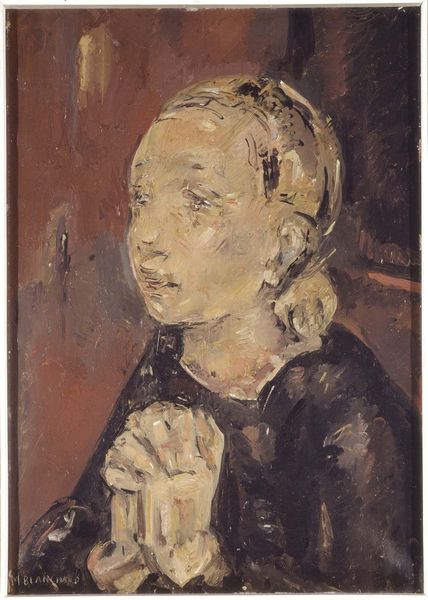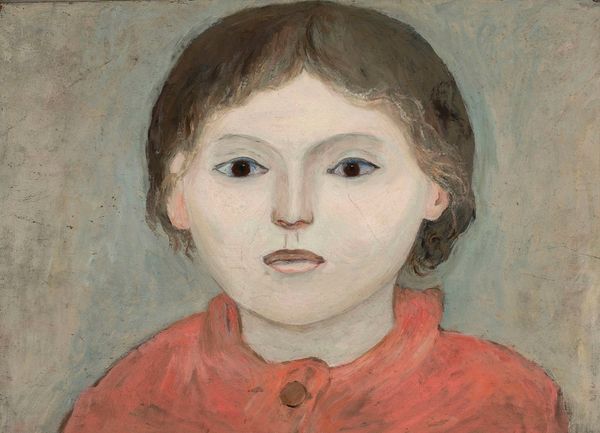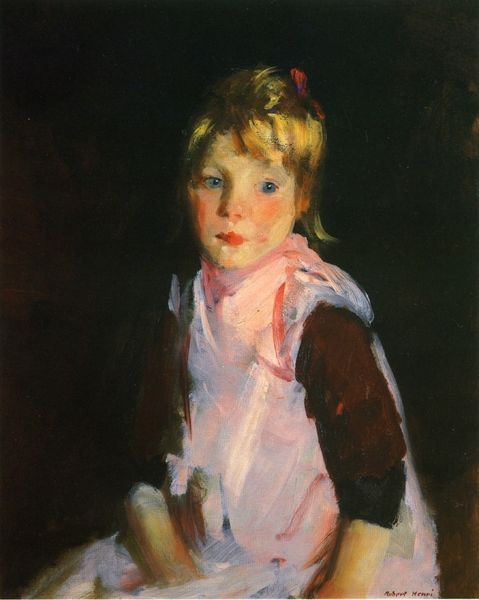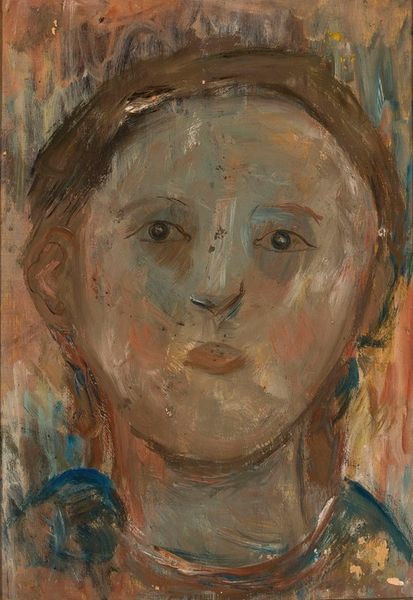
Copyright: Public domain
Curator: Let's turn our attention to this compelling portrait from 1894 titled "Vincent Willem Van Gogh", rendered in oil paint by Isaac Israels and currently housed at the Van Gogh Museum. What strikes you initially? Editor: It's disarming, almost haunting, isn't it? The child's gaze feels intensely direct, carrying a weight that belies their youth. Curator: Indeed. Now, let’s consider the materiality. The application of paint is quite direct; you see visible brushstrokes layered, particularly in rendering the garment. Do you believe the medium contributes to the psychological impression? Editor: Unquestionably. The color red is a profound element in nearly every culture: it represents anger, danger, bravery, but also, in many Western cultures, the innocence of youth. Juxtaposed with the sombre backdrop and slightly melancholic eyes, it creates a powerful tension. Curator: Looking at production, it shows influence from Impressionism through realism—evident not just in the visible brushwork, but also its capture of everyday life— genre-painting with a bourgeois-like kid is here to be seen, yes, through brushstroke. One can observe quickly rendered but with the clear intention of materializing something palpable: youth Editor: Absolutely. This child might have been someone Isaac knew from his immediate life, possibly of a merchant; this type of dress was more expensive during those years. There is here a symbolic relation that could not be seen otherwise. In the garment's lines we notice what the culture expects for the individual: be within its own lines to belong. The garment looks rigid, however, the face seems soft. This tension makes this work stand out. Curator: Interesting consideration. For me, the red symbolizes the energy required for a painting like that. But the execution, almost hasty at a glance, doesn't communicate to me a traditional portrait meant to showcase wealth but simply an honest portrait, and not a work by a family request. So the symbol seems rather raw than completely settled and imposed. Editor: Fair enough. Ultimately, it seems the combination of style and the weight of color creates a tension, forcing us to engage deeply with not only its context of production, but also our own preconceptions about portraits, about class, and about innocence. Curator: A valuable reminder that art and, as in this particular piece of Isaac, its raw material presence always invites multifaceted engagement.
Comments
No comments
Be the first to comment and join the conversation on the ultimate creative platform.

